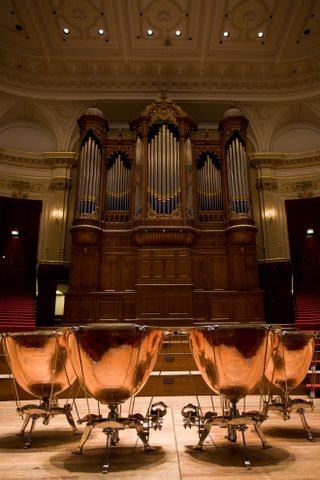- Finale.
- C Major.
Boisterous timpani joined by blazing brass set the scene for the riotous fifth movement. The long, arduous first movement, after three shorter movements developmental in mood, is finally equalled by a substantial ‘daylight’ finale. The movement is a rondo combined with a set of eight variations, capped off by a dramatic coda. There are parodies of Richard Wagner (1813-1883) – Die Meistersinger von Nürnberg and Franz Lehar (1870-1948) – The Merry Widow.
Manuscript Symphony No. 7, Movement 5: Rondo-Finale. Opening, fair copy.
There are many strange and abrupt interruptions of climactic buildups, including at the very end of the coda. The texture is, for the most part, based on a banal descending broken scale motif. There is also a heavy emphasis on acerbic brass chorales and relentlessly satirical rustic dances. Little wonder that, of all the Symphony’s movements, this has come in for the greatest amount of criticism and puzzlement.

The rute is in Symphony No. 7 used in Movement 5: Rondo-Finale.
It has been seen by many as something of a let-down and somewhat superficial, dodging questions set by the previous movements; its virtually unrelenting mood of celebration seems quite at odds with the dark character of the earlier movements. Mahler himself explained it with the aperçu ‘The world is mine!’.
The principal theme of the first movement crops up amidst the outrageously exuberant finale, but is soon quelled and reappears in the major mode. Cowbells from the first ‘Nachtmusik’ and the ‘Bells low untuned’ from Mahler’s Symphony No. 6 also make appearances.
The movement (and therefore the symphony) ends in a very strange way; a seemingly random stray G-sharp changes the harmonic quality from major to augmented, the music suddenly drops to piano before a stubborn fff c major chord ends the work.

In Amsterdam recently restored timpani, built for Willem Mengelberg (1871-1951)‘s performances of Symphony No. 7 to play the climatic low Db roll. See Hans Johann Schnellar (1865-1945).
Listening Guide
